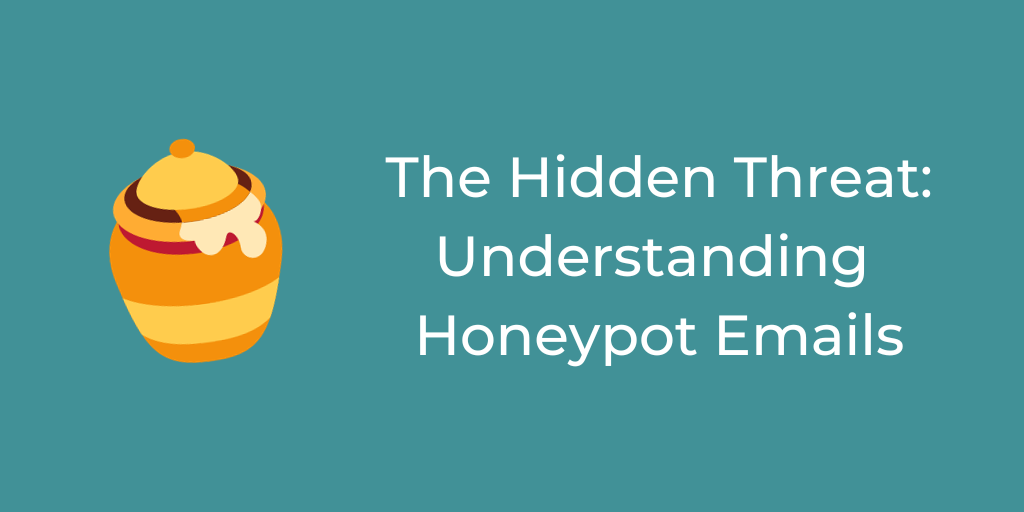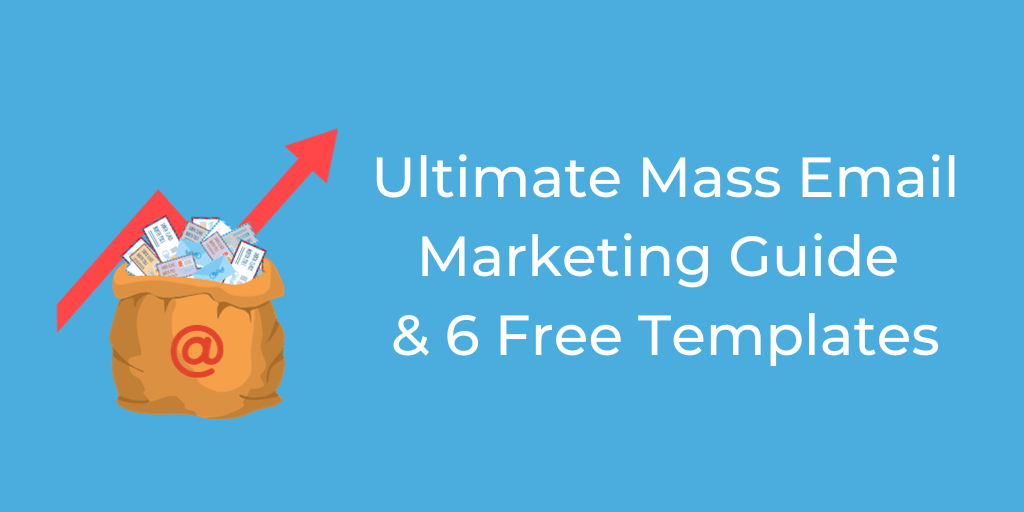
Quick links
In this article, we’ll dig deep into what honeypot emails are, why they’re problematic for marketers, and how you can avoid this not-so-sweet situation.
As you probably already know, maintaining a healthy email list is essential for ensuring your campaigns reach the right inboxes and achieve desired outcomes.
But what if an invisible threat was lurking in your email list? Enter the honeypot email, a cybersecurity trap that could jeopardize your email campaigns.
Contents
- What is a honeypot email?
- Honeypot emails vs. general spam traps
- How can honeypot emails affect your email campaign?
- How do honeypots end up on your email list?
- The dangers of honeypots
- Steps to avoid honeypot emails
- Conclusion
What is a honeypot email?
A honeypot email is essentially a bait email address, specifically set up to catch spammers.
Cybersecurity experts create these fake email accounts to attract unsolicited messages, allowing them to study spammer behavior and strengthen security measures.
While this is a beneficial practice for combating cybercrime, it poses significant risks to legitimate email marketers. Sending an email to a honeypot address can result in your messages being flagged as spam, impacting your email deliverability and possibly leading to your IP address being blacklisted.
Honeypot emails vs. general spam traps
You might be thinking, aren’t all spam traps honeypots?
Actually, no.
It’s important to distinguish between honeypot spam traps and general spam traps. Honeypots are made to be entirely fictitious and exist solely for the purpose of trapping spammers.
On the other hand, general spam traps are often once-legitimate email addresses that have become inactive over time. Security experts utilize these old accounts to identify potentially suspicious senders.
If you’re continually sending emails to an inactive account, it raises red flags that you may have acquired the address through shady tactics.
Understanding the differences between these two types of traps will keep you better equipped to navigate the challenges of email marketing without falling into unintended pitfalls.
Honeypots:
- are created by cybersecurity experts specifically to trap spammers.
- are completely fake email addresses.
- are harder to identify due to their resemblance to legitimate emails.
- are used to gather intelligence on spammer tactics.
- may result in stricter penalties like IP blacklisting.
Spam Traps:
- may be real email addresses that are old, but they’re repurposed for trapping spammers.
- were active at some point and might have been used in legitimate exchanges.
- are easier to identify through signs of inactivity.
- are primarily used to clean up email lists and identify bad marketing practices.
- could lead to your emails being marked as spam, but generally less severe penalties than honeypots.
How do honeypot emails work?
As detailed above, honeypots are not just random or inactive email addresses, they’re carefully engineered to resemble legitimate email accounts.
When a marketer or a spammer sends an email to a honeypot, they unknowingly activate the trap.
This sets off a chain of events that cybersecurity professionals use to track, identify, and analyze the sender’s activities.
The honeypot system automatically records key data such as IP addresses, email content, and sending patterns. This intelligence is then analyzed to develop more sophisticated spam filters and security measures.
Over time, the data from honeypots contribute to large-scale spam and cybersecurity databases, helping in the fight against not just spam, but potentially more malicious threats like phishing schemes.
Honeypots are not limited to one type of system or service. They can exist on large-scale email platforms, in corporate email systems, and even in private email servers.
This wide distribution makes them incredibly effective, but also poses a significant risk for email marketers who are not diligent about how they acquire and maintain their email lists.
Falling into a honeypot trap is a serious issue that can lead to your emails being blacklisted or flagged, affecting your campaign and reputation significantly.
Therefore, understanding how honeypots work is the first step in avoiding them.
Let’s break down the process of how email honeypots work, step-by-step.
- Creation of the honeypot email address: Cybersecurity experts create an email address that looks legitimate but is designed to act as a trap for spammers.
- Distribution of the honeypot: The honeypot email address is strategically placed where spammers or less scrupulous marketers might find it. This could be in forums, websites, or even hidden in the HTML code of webpages.
- Email sent to honeypot: When an email marketer or spammer sends an email to the honeypot address, the trap is activated.
- Data collection: The honeypot system automatically records incoming data from the sender. This includes IP addresses, email headers, content, and sending patterns.
- Analysis: Cybersecurity professionals analyze the collected data to understand the tactics and techniques used by the sender.
- Spam filter update: Information derived from the analysis is used to update spam filters and improve email security measures.
- Blacklisting or flagging: Depending on the severity and the intent, the sender’s IP address or email service could be blacklisted, causing emails from that source to be marked as spam or blocked entirely.
- Ongoing monitoring: Honeypots remain active, continuing to collect data on new threats and tactics used by spammers, contributing to a cycle of ever-improving email security.
How can email honeypots affect your campaigns?
Honeypots trigger spam filters
One of the immediate effects of emailing a honeypot is the activation of spam filters. As soon as you send an email to a honeypot address, you risk having your subsequent emails flagged by spam filters. This makes it difficult for your legitimate messages to reach your actual audience, as they may end up in the spam folder.
Reduced email deliverability
Continuously sending emails to honeypots can lead to decreased email deliverability rates. This means that fewer of your emails will reach the inboxes of your subscribers, affecting the overall performance and ROI of your email campaigns.
IP blacklisting
In severe cases, sending emails to honeypot addresses could result in your IP address being blacklisted. Once this happens, your emails are likely to be blocked by most email service providers, severely hampering your email marketing efforts.
Damage to reputation
Getting caught in a honeypot trap can severely damage your brand’s reputation. Customers and clients may lose trust in your business if they learn that you’ve been marked as a spammer, either through word of mouth or online reviews.
Legal consequences
Some jurisdictions have stringent anti-spam laws, and repeatedly hitting honeypots could land you in legal trouble. Penalties can range from fines to more severe legal actions, depending on the number of violations and the jurisdiction in question.
Wasted marketing resources
Falling into a honeypot spam trap means that some of your marketing efforts are being directed towards nonexistent or fraudulent email addresses. This is a waste of both time and money, as none of these efforts will yield any return on investment.
Increased email bounce rates
Hitting honeypots can also result in an increased email bounce rate, particularly if your email list contains multiple honeypots or invalid addresses. High bounce rates are generally a red flag for email service providers and can further compromise your email deliverability.
How do honeypots end up on your list?
Even if you’re vigilant about responsible email marketing, honeypot emails can still find their way onto your list. Here’s how that can happen:
Accidental addition by a user: It’s easy for someone to mistype an email address when signing up for your newsletter. While this is usually unintentional, the consequences are the same: you risk being marked as a spammer.
Competitive sabotage: Believe it or not, business rivals might deliberately add honeypot emails to your list to harm your email deliverability and reputation.
Bought email lists: Some marketers, despite advice to the contrary, purchase email lists to fast-track their audience growth. This is a dangerous tactic that can infest your list with honeypot addresses.
Scraped email addresses: If you’re using an email list that was scraped from various websites, there’s a higher likelihood it could contain honeypot emails. Anti-spam organizations often place these on websites as traps for unethical marketers.
The dangers of honeypot emails
Along with having major impacts on your email campaigns, there are a few other dangers that honeypots can get you in, if you’re not careful.
Damaged email reputation: When your emails end up in honeypot addresses, your sender reputation takes a hit. This can affect your email deliverability rates, making it less likely that your emails will reach your audience’s inbox.
Blacklisting of IP address: Some honeypots are set up to blacklist the IP addresses that send spam emails to them. This could result in your emails not getting delivered, or worse, being marked as spam across various email service providers.
Legal ramifications: Falling into a honeypot trap can sometimes have legal implications, especially if you’re not in compliance with laws around unsolicited emails.
Lost revenue: Ultimately, all these factors contribute to lost opportunities and revenue. If your emails are not getting through or are marked as spam, your engagement and conversion rates will suffer.
<h2id=”#avoiding-honeypots”>Steps to avoid honeypot email addresses
Now that you know how honeypots work and all the problems that come along with falling into one, it’s time to learn some best practices you can adopt to avoid them.
1. Keep your email lists clean
Regular maintenance of your email list can go a long way in protecting you from honeypots. Look for inactive addresses, hard bounces, and any suspicious-looking email addresses. Removing these can help you maintain a cleaner, more effective email list.
TIP: Looking for a way to improve your email deliverability while keeping your email list squeaky clean? Sign up for a free account and start improving your email deliverability.
2. Don’t buy email lists
The quickest way to land in honeypot trouble is by purchasing email lists. These lists often contain honeypot emails planted by cybersecurity specialists, setting a trap for spammy behavior. Earning your subscribers naturally is the best way to avoid this issue.
3. Remove any hard bounces ASAP
Hard bounces indicate that an email address is invalid, and continuing to send emails to these addresses could flag your account as spam. Monitor your email campaigns for any hard bounces and remove them from your list immediately.
4. Check your email deliverability
Tools are available to test your email’s deliverability before you send it out to your entire list. Services like EmailListVerify can provide insights into whether your email will land in the inbox or the spam folder. By regularly checking, you can tweak your emails for better performance.
5. Use double opt-in
Double opt-in is a method where the user has to confirm their email address before being added to your mailing list. This ensures that the email address is valid and that the user is interested in receiving emails from you, reducing the chances of stumbling upon a honeypot.
6. Keep your email list clean
Regular maintenance of your email list can go a long way in protecting you from honeypots. Look for inactive addresses, hard bounces, and any suspicious-looking email addresses. Removing these can help you maintain a cleaner, more effective email list.
Cleaning your email list is a little bit like finding needles in haystacks, but this 5 step process can help make it easier.
- Remove invalid addresses: Technically you could suss out bad emails manually, but using tools like EmailListVerify is much faster and better at identifying and removing incorrect or fake addresses, reducing bounce rates and protecting your sender reputation.
- Remove inactive subscribers: Identify subscribers who haven’t engaged in the last 3-6 months. Send a re-engagement campaign and if they don’t respond, remove them from your list.
- Check for duplicates: Be sure each subscriber appears only once in your list by removing any duplicate entries.
- Use a list cleaning service: Employ services like EmailListVerify to identify and remove problematic addresses like hard bounces and spam traps.
- Regular segmentation and updates: Continuously segment and update your list based on user behavior and preferences to maintain relevance and engagement.
Conclusion
As the cyber world grows more and more complex, so too do the methods used by security professionals to keep us safe from scams. Even legitimate and savvy marketers may find themselves caught in a honeypot if they’re not being cautious.
Falling into a honeypot spam trap can have catastrophic effects on your email deliverability, impacting your campaign’s effectiveness and your brand’s reputation. By being vigilant and following best practices like avoiding purchased email lists, implementing double opt-in, and keeping a clean and verified email list can safeguard your campaigns.
The stakes are high, but with the right precautions, you can steer clear of honeypots and keep your marketing emails safe, sound, and where they belong – in the inbox.
Join Our Monthly Newsletter
Learn how to improve email deliverability and clean your email lists with and more.


